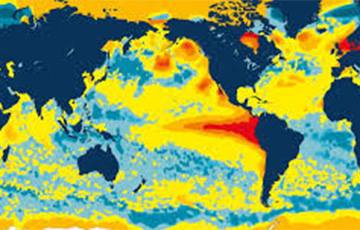World Could Get A Break From Extreme Heat
7- 4.06.2024, 19:22
- 12,606

The El Niño phenomenon is waning.
The World Meteorological Organization (WMO) said the return of the La Niña weather pattern this year could help cool average global temperatures after months of record-breaking heat. The impact of the new phenomenon is likely to be felt over the next few months, Science Alert reports.
The WMO report said the El Niño pattern that has defined weather since mid-summer 2023 is “showing signs of ending.” But the organization warned that in the long term, temperatures will continue to rise due to human-induced climate change. It is worsening extreme weather and altering seasonal rainfall and temperature patterns.
La Niña will bring cooling sea surfaces across large parts of the tropical Pacific Ocean, coupled with winds, rainfall, and changes in atmospheric pressure. In many regions, particularly in the tropics, La Niña has the opposite effect on climate to El Niño, which warms the oceans, causing drought in some parts of the world and heavy rainfall in others.
The WMO report says there is a 60% chance of La Niña occurring between July and September, and a 70% chance of it occurring between August and November. The chances of El Niño returning are rated as “slight”.
Every month since June 2023, when El Niño began, has set a new temperature record, and last year was the hottest year on record.
“The end of El Niño does not mean a pause in long-term climate change, as our planet will continue to warm due to heat-trapping greenhouse gases. Exceptionally high sea surface temperatures will continue to play a major role in the coming months,” said WMO Deputy Secretary-General Co Barrett.
And much of that excess heat is stored in our oceans. The National Oceanic and Atmospheric Administration has already factored the expected La Niña into its forecasts for this year's Atlantic hurricane season.
“The upcoming Atlantic hurricane season is expected to be above-normal due to a confluence of factors, including near-record warm ocean temperatures in the Atlantic, developing La Niña conditions in the Pacific, reduced Atlantic trade winds, and reduced wind shear,” NOAA said.










